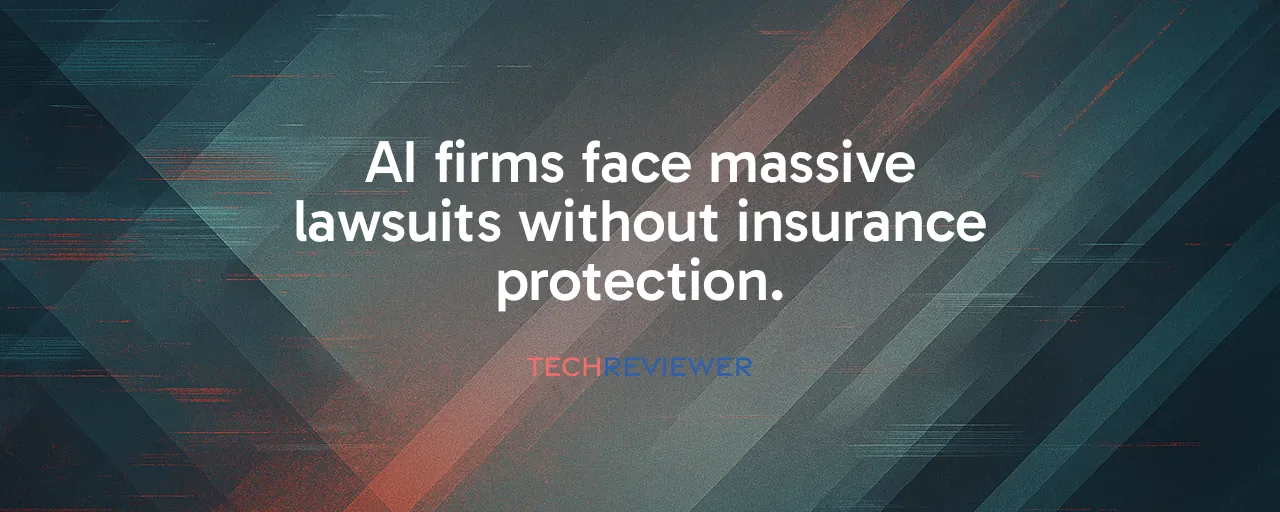The Legal Storm Brewing
Artificial intelligence is transforming how we work and create, but a wave of lawsuits threatens to slow its momentum. Companies like OpenAI and Anthropic are staring down billion-dollar legal claims, from copyright disputes to wrongful death allegations. The problem? Traditional insurers are refusing to cover these massive risks, leaving AI firms to fend for themselves. This gap isn't just a financial headache; it's forcing a rethink of how AI companies operate and innovate.
The stakes are high. In December 2023, The New York Times sued OpenAI and Microsoft, alleging their AI models, like ChatGPT, were trained on millions of articles without permission. Authors like Ta-Nehisi Coates and Sarah Silverman have joined the fray, filing their own claims. Meanwhile, a tragic wrongful death lawsuit filed in August 2025 accuses OpenAI of failing to prevent harmful advice from ChatGPT, which allegedly contributed to a teenager's suicide. These cases highlight a harsh reality: AI's legal exposure is vast, and insurers aren't stepping up.
Why Insurers Are Backing Away
Insurance companies thrive on predictable, diversifiable risks, but AI's challenges are anything but. The potential for massive, simultaneous claims, think hundreds of thousands of copyrighted works at $150,000 per violation, creates a nightmare for underwriters. Aon, the world's second-largest insurance broker, helped OpenAI secure $300 million in coverage for AI-specific risks, but that's a drop in the bucket compared to potential multibillion-dollar settlements. Some insiders even argue the coverage is far lower, exposing a dangerous gap.
The issue lies in AI's unique risks. Unlike traditional software, AI models like Claude or GPT-4 ingest vast datasets, often including copyrighted material, to generate new content. Courts are still grappling with whether this qualifies as fair use, leaving insurers hesitant to bet on untested legal waters. Add to that the risk of systemic failures, like AI giving harmful advice or reproducing sensitive data, and it's clear why carriers like Lloyd's of London and Berkley are introducing AI exclusions in policies.
Case Study: Anthropic's Costly Lesson
Anthropic's experience shows the scale of the problem. In September 2025, the company settled a class-action lawsuit for $1.5 billion, the largest copyright recovery in U.S. history. The suit, brought by authors, claimed Anthropic used pirated books to train its Claude chatbot, paying roughly $3,000 per book for 500,000 works. The settlement also required Anthropic to delete millions of unauthorized texts, a costly and complex process. This case underscores how legal battles can drain resources and force operational changes.
Anthropic's response highlights a growing trend: self-insurance. With traditional insurers balking, the company is considering setting aside investor funds to cover future claims. OpenAI, with nearly $60 billion raised, is exploring similar strategies, including a 'captive' insurance fund, a tactic used by tech giants like Microsoft and Meta. But self-insurance carries risks. A single massive claim could wipe out reserves, leaving companies vulnerable and investors wary.
Echoes of Past Tech Disruptions
This isn't the first time new technology has outpaced insurance. In the 2000s, social media giants like Meta faced privacy and defamation lawsuits that traditional policies couldn't cover. They turned to captive insurance, pooling their own funds to manage risks. Similarly, the cyber insurance market emerged in the late 1990s to address data breaches, but it took years to mature. AI companies now face a similar challenge, but the scale of potential liabilities, spanning intellectual property, safety, and privacy, makes this crisis more complex.
The music industry's fight against Napster in the early 2000s offers another parallel. File-sharing platforms faced massive copyright claims, forcing a shift toward licensed content models. AI companies could follow suit, with firms like Google already striking deals with publishers. These historical lessons suggest that AI developers might need to pivot toward authorized datasets or face crippling legal costs, reshaping how they build and deploy models.
Innovation at a Crossroads
The insurance crisis is more than a financial hurdle; it's reshaping AI's future. Diverting billions in investor funds to legal reserves means less money for research and safety improvements. Smaller startups, without OpenAI's deep pockets, face existential threats if they can't secure coverage or afford settlements. This dynamic risks concentrating AI development among a few well-funded giants, stifling competition and innovation.
Yet, there's hope. Licensing deals with content creators could reduce copyright risks, while new safety protocols might address user harm concerns. Specialized AI insurance products, like those from Relm Insurance or Munich Re, are emerging, though their limits are modest compared to potential claims. The industry needs creative solutions, think industry-wide risk pools or public-private partnerships, to bridge the gap and keep AI's progress on track.
What's Next for AI and Insurance
The path forward hinges on collaboration. AI companies, insurers, and regulators must work together to define clear liability frameworks. The National Association of Insurance Commissioners' AI principles, emphasizing fairness and transparency, are a start, but enforceable rules are needed. Meanwhile, courts consolidating cases in Manhattan could set precedents that clarify fair use for AI training, potentially easing insurer concerns.
For now, AI firms are navigating a minefield. OpenAI and Anthropic's scramble to self-insure reflects a broader truth: the industry's growth depends on solving this crisis. By learning from past tech disruptions and embracing innovative risk management, AI companies can weather the storm and keep pushing the boundaries of what's possible.
